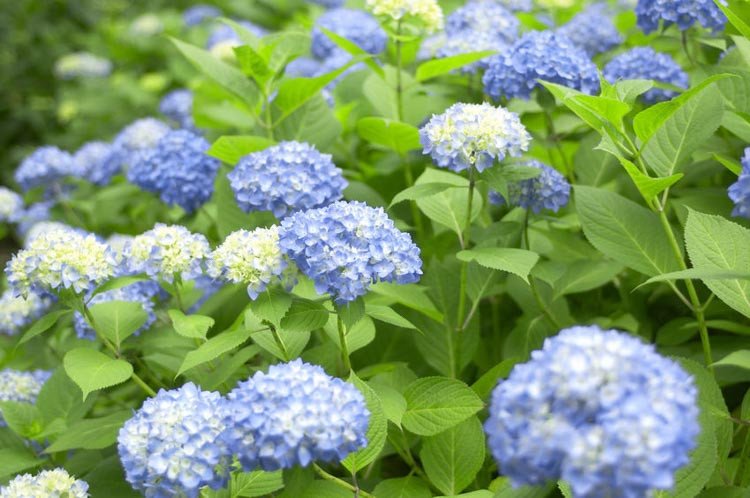Hydrangea - Expert Tips for Gardening Success
Hydrangeas are popular flowering shrubs known for their large, globe-like blooms. To ensure their optimal growth and vibrant colors, follow these expert tips:
Location: Most hydrangeas prefer partial shade, with some species tolerating full sun and others preferring more shade. In general, the hotter the climate, the more shade your plant will need.
Soil: They prefer well-draining soil rich in organic matter. Before planting, amend the soil with compost to boost fertility.
Watering: Regular watering is crucial, especially during dry spells. However, avoid water logging the soil. A deep watering once a week is generally sufficient.
Pruning: Know your hydrangea species. Some hydrangeas bloom on old wood and others on new growth. Prune at the right time to avoid cutting off the next season’s blooms.
Bloom Color: The pH of the soil can change the flower color in some species, especially Hydrangea macrophylla. Acidic soils produce blue flowers, while alkaline soils yield pink blooms. Aluminum sulfate can make flowers bluer, while lime can turn them pinker.
Fertilization: Apply fertilizer based on the specific needs of your hydrangea variety. Each type has different requirements and will benefit from different application timings.
Mulching: Mulch around the base to retain moisture, suppress weeds, and regulate soil temperature.
Protection: In colder climates, protect hydrangeas from harsh winter winds and frost by providing a thick layer of mulch or burlap wrapping.
Pests & Diseases: Watch for common issues like powdery mildew, aphids, and spider mites. Address promptly with organic solutions or insecticidal soaps.
Propagation: Hydrangeas can be propagated through several methods, including taking stem cuttings, dividing established plants, or layering.

